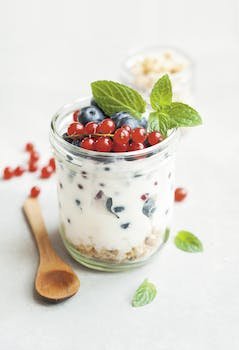-
Оглавление
“Aphrodisiacs: Unleash Your Inner Desires!”
The Science Behind Aphrodisiacs: Exploring the Chemistry of Love
Love is a powerful emotion that has been celebrated throughout the ages. It has been the source of inspiration for countless works of art, literature, and music. But what is it that makes love so powerful? Is it something that can be explained by science?
The answer is yes! In fact, there is a whole field of science dedicated to the study of love and its effects on the human body. This field is known as the science of aphrodisiacs.
Aphrodisiacs are substances that are believed to increase sexual desire and arousal. They have been used for centuries in various cultures around the world. While some of these substances may have been nothing more than superstition, there is a growing body of scientific evidence that suggests that certain substances can indeed have an effect on our libido.
So what is the chemistry behind these substances? It turns out that many of them contain compounds that interact with the body’s hormones and neurotransmitters. For example, some aphrodisiacs contain compounds that increase the production of dopamine, a neurotransmitter that is associated with pleasure and reward. Other compounds can increase the production of testosterone, a hormone that is associated with sexual desire.
The science of aphrodisiacs is still in its infancy, but it is an exciting field of study that could lead to new treatments for sexual dysfunction and other related conditions. In the meantime, it is important to remember that love is a complex emotion that cannot be reduced to a simple chemical reaction. But understanding the chemistry behind it can help us better appreciate the power of love and its ability to bring us closer together.
A History of Aphrodisiacs: From Ancient Times to the Present

Aphrodisiacs have been used for centuries to increase sexual desire and pleasure. From ancient times to the present, people have sought out natural and synthetic substances to enhance their sexual experiences.
In ancient times, the Egyptians and Greeks believed that certain foods and herbs could increase sexual desire. The Egyptians used honey, dates, and figs as aphrodisiacs, while the Greeks used mandrake root and opium. In India, the Kama Sutra, an ancient Hindu text, recommended the use of various herbs and spices to increase sexual pleasure.
In the Middle Ages, Europeans believed that certain foods, such as oysters, were aphrodisiacs. They also believed that certain plants, such as mandrake root, had magical powers that could increase sexual desire.
In the 19th century, scientists began to study the effects of various substances on sexual desire. They discovered that some substances, such as cocaine and opium, could increase sexual desire, while others, such as alcohol, could decrease it.
In the 20th century, scientists continued to study the effects of various substances on sexual desire. They discovered that some substances, such as testosterone and estrogen, could increase sexual desire, while others, such as anti-depressants, could decrease it.
Today, scientists are still studying the effects of various substances on sexual desire. They are also researching the effects of various natural substances, such as herbs and spices, on sexual desire.
Aphrodisiacs have been used for centuries to increase sexual desire and pleasure. From ancient times to the present, people have sought out natural and synthetic substances to enhance their sexual experiences. While some substances have been found to be effective, others have not. However, the search for the perfect aphrodisiac continues, and with it, the hope of finding a way to increase sexual pleasure and desire.
Aphrodisiacs Around the World: Exploring the Different Cultures and Cuisines That Use Them
Aphrodisiacs have been used around the world for centuries, with different cultures and cuisines utilizing them in unique and interesting ways. From the exotic spices of India to the sweet fruits of the Caribbean, aphrodisiacs have been used to enhance the pleasure of food and sex.
In India, the use of aphrodisiacs dates back to ancient times. Spices such as cardamom, cinnamon, and nutmeg are believed to have aphrodisiac properties, and are often used in Indian cuisine. Cardamom is said to increase libido, while cinnamon is thought to stimulate the senses. Nutmeg is believed to be an aphrodisiac, and is often used in Indian desserts.
In the Caribbean, fruits such as mangoes, papayas, and bananas are believed to be aphrodisiacs. Mango is said to increase libido, while papaya is thought to be an aphrodisiac due to its high vitamin C content. Bananas are believed to be an aphrodisiac due to their high potassium content.
In China, ginseng is believed to be an aphrodisiac. It is often used in Chinese cuisine, and is said to increase libido and sexual performance. Other Chinese aphrodisiacs include deer antler, which is believed to increase energy and stamina, and sea cucumber, which is said to improve circulation.
In Japan, the use of aphrodisiacs dates back to the Edo period. Fugu, or blowfish, is believed to be an aphrodisiac due to its high levels of amino acids. Other Japanese aphrodisiacs include sea urchin, which is said to increase libido, and abalone, which is believed to improve sexual performance.
Aphrodisiacs have been used around the world for centuries, and each culture has its own unique way of utilizing them. From the exotic spices of India to the sweet fruits of the Caribbean, these aphrodisiacs can be used to enhance the pleasure of food and sex. So why not explore the different cultures and cuisines that use them and discover the power of aphrodisiacs for yourself?
Заключение
In conclusion, aphrodisiacs have been used for centuries to increase sexual desire and performance. While there is no scientific evidence to support the effectiveness of aphrodisiacs, many people believe that they can be beneficial in improving sexual health. Ultimately, it is up to the individual to decide if they want to try an aphrodisiac and to consult with a healthcare professional before doing so.




